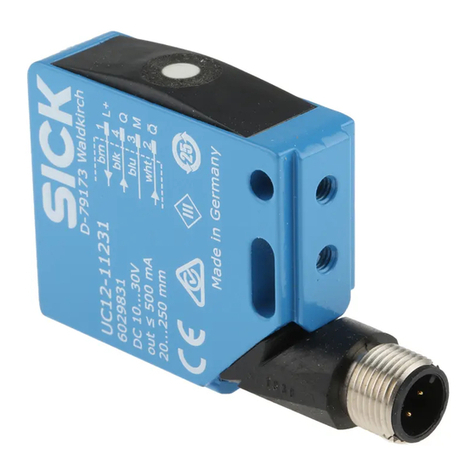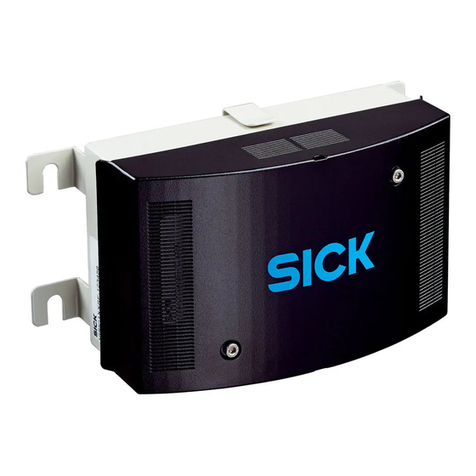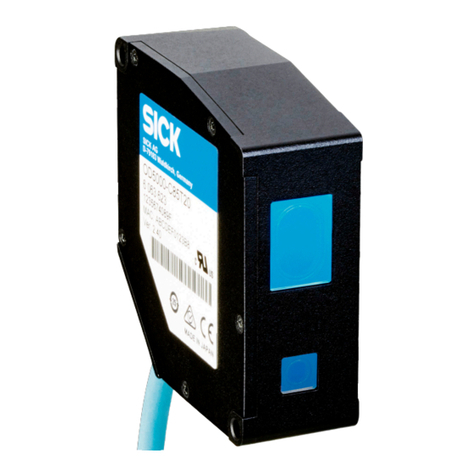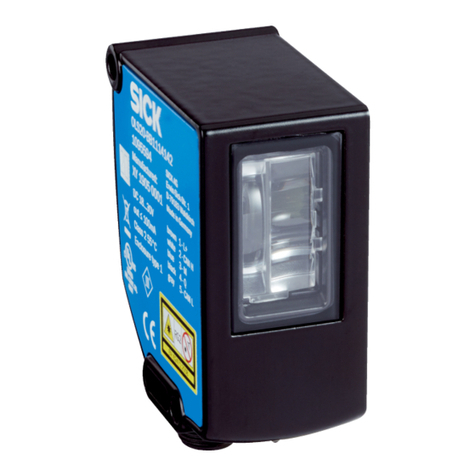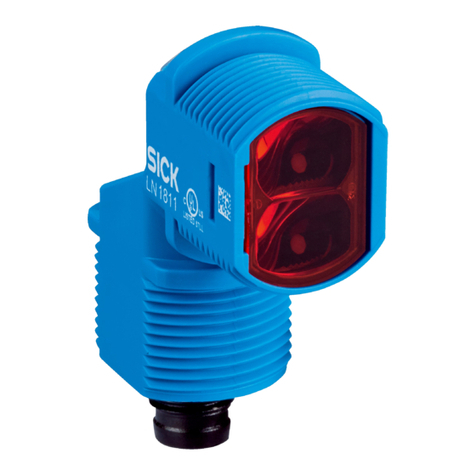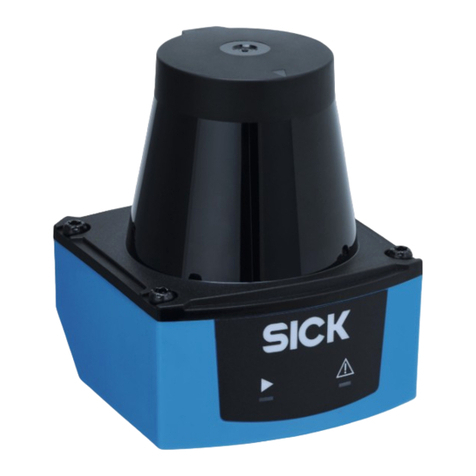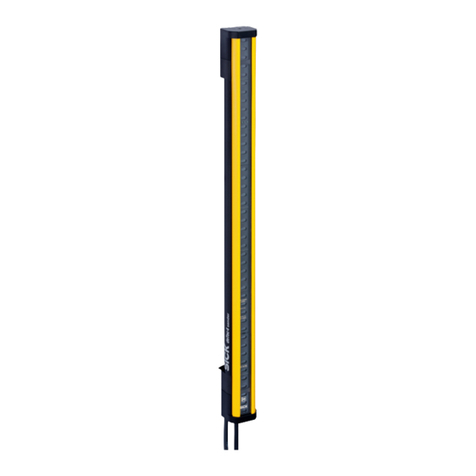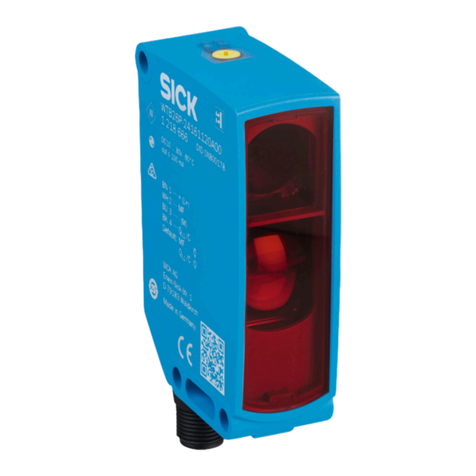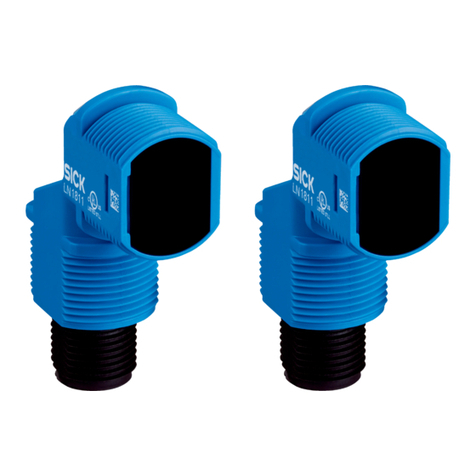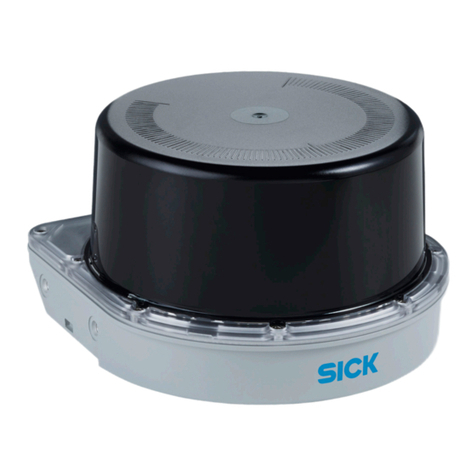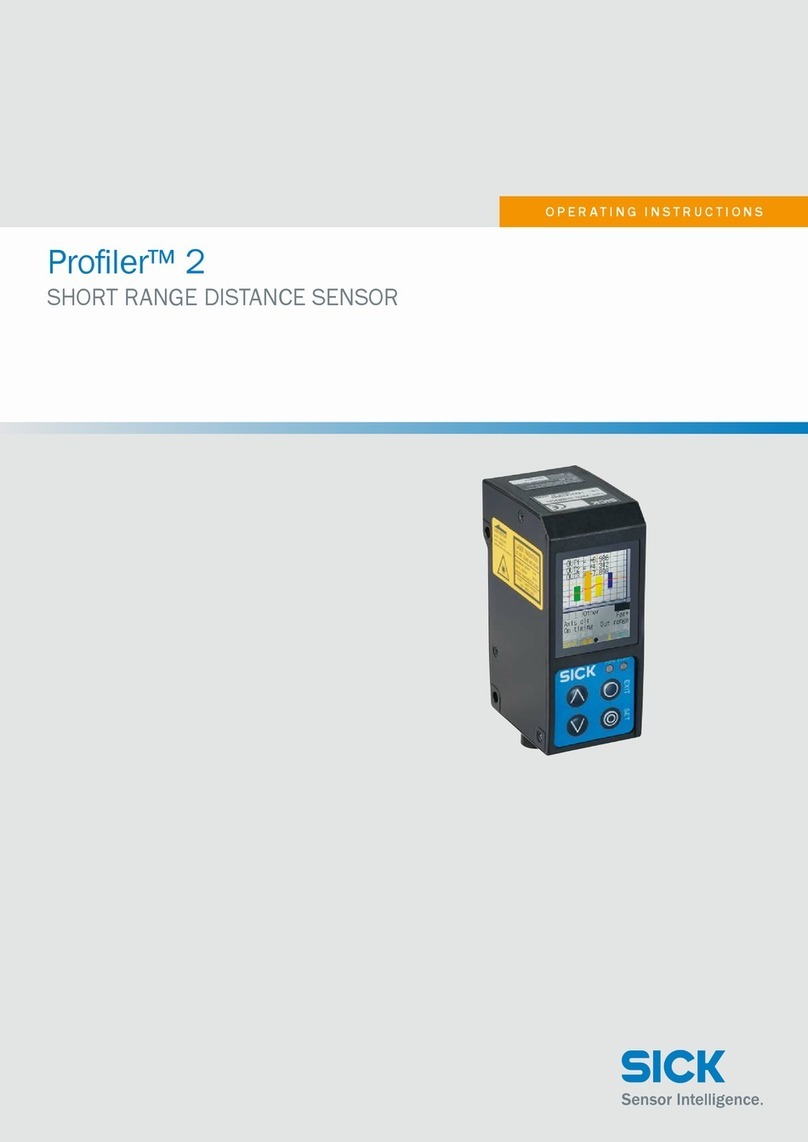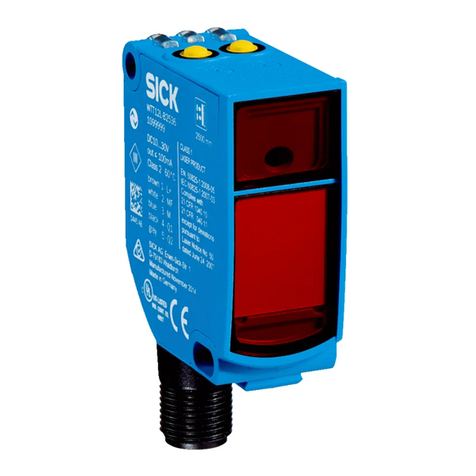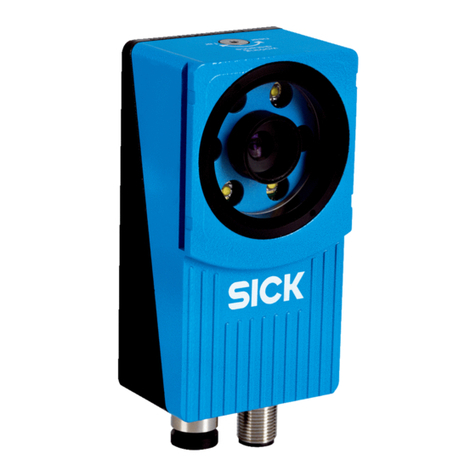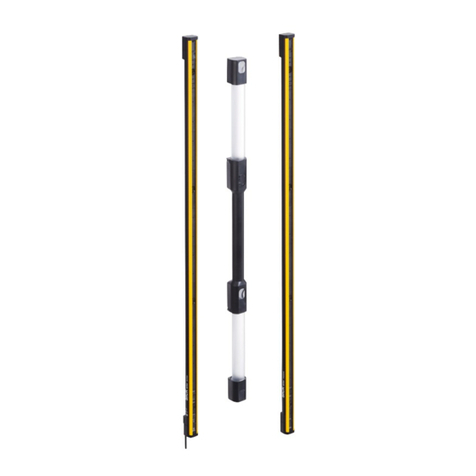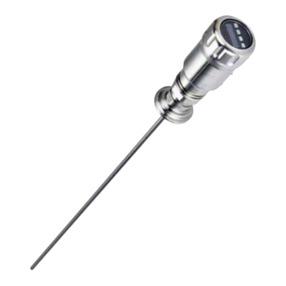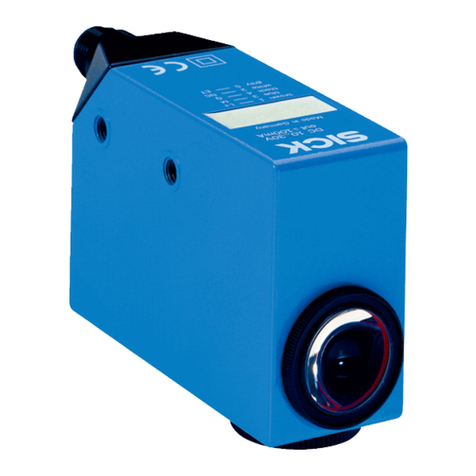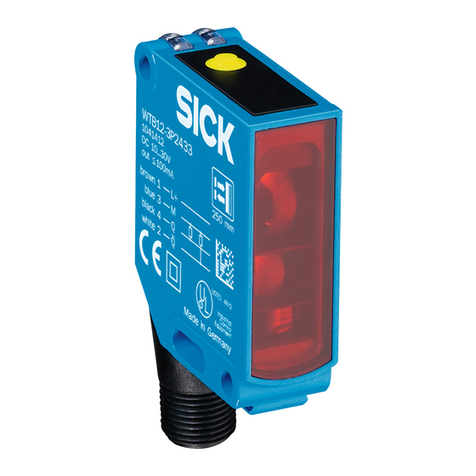
7 Troubleshooting
The Troubleshooting table indicates which measures are to be taken if the sensor stops
working.
7.1 Troubleshooting table
Table 4: Troubleshooting
LED indicator/fault pattern Cause Measures
Green LED does not light up No voltage or voltage below
the limit values
Check the power supply,
check all electrical connec‐
tions (cables and plug connec‐
tions)
Green LED does not light up Voltage interruptions Ensure there is a stable power
supply without interruptions
Green LED does not light up Sensor is faulty If the power supply is OK,
replace the sensor
Yellow LED flashes Sensor is still ready for opera‐
tion, but the operating condi‐
tions are not ideal
Check the operating condi‐
tions: Fully align the beam of
light (light spot) with the
object / Clean the optical sur‐
faces / Readjust the sensitiv‐
ity (potentiometer)
Yellow LED lights up, no object
in the path of the beam
Remission capability of the
background is excessive
Check changes to the back‐
ground. Reduce the sensitivity
of the sensor or use sensors
with background suppression
Object is in the path of the
beam, yellow LED does not
light up
Sensitivity is set too low or dis‐
tance between the sensor and
the object is too long
Increase the sensing range,
take note of the distance
between the sensor and the
background
Object is in the path of the
beam, yellow LED does not
light up
Remission capability of the
object is insufficient
Increase the sensing range,
take note of the distance
between the sensor and the
background
8 Disassembly and disposal
The sensor must be disposed of according to the applicable country-specific regula‐
tions. Efforts should be made during the disposal process to recycle the constituent
materials (particularly precious metals).
9 Maintenance
SICK sensors are maintenance-free.
We recommend doing the following regularly:
•Clean the external lens surfaces
•Check the screw connections and plug-in connections
No modifications may be made to devices.
Subject to change without notice. Specified product properties and technical data are
not written guarantees.
7 TROUBLESHOOTING
10 8021850 | SICK
Subject to change without notice
